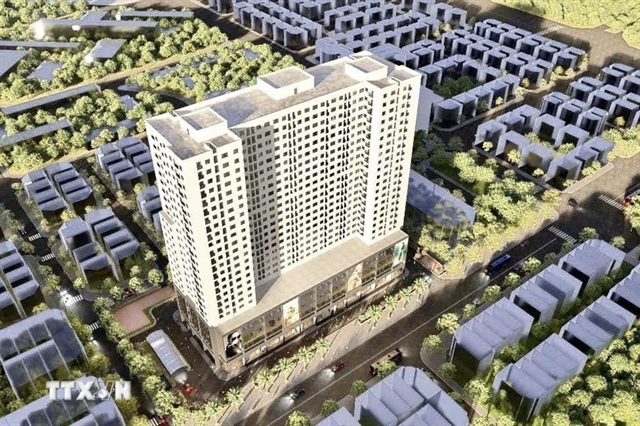 Society
Society


|
| A social housing project in Hạ Đình urban area, Hà Nội. VNA/VNS Photo |
HÀ NỘI — Deputy director of Hà Nội Department of Finance Lê Trung Hiếu has proposed a shift from selling low-cost social housing to developing high-quality social rental housing with direct budget subsidies for residents.
He made the proposal in a recent article written for Dân Trí (Intellectual) e-newspaper.
He cited the fact that social housing policy in Việt Nam in recent years has revealed a problem. The policy of selling low-cost housing has inadvertently pushed many vulnerable families into a cycle of debt and instability.
The story of Hùng, a factory worker in an industrial zone in Hà Nội, is a typical example.
Although he is eligible to buy social housing, with a combined monthly income of just over VNĐ20 million, he has no idea where to find VNĐ400–500 million needed for the initial down payment, not to mention the monthly bank installments that would follow.
The dream of owning a small apartment in the city becomes distant, while financial pressure threatens to turn the joy of 'settling down' into a burden on his shoulders.
Hiếu said many social housing projects in Việt Nam are built in remote areas far from city centres, with only rudimentary quality and lacking essential services and amenities.
These residential zones risk rapid deterioration and may turn into isolated housing clusters, undermining the long-term sustainability of the policy.
High-quality social rental housing model can be implemented in Việt Nam in two phases, he said.
From now until 2030, pilot programmes should be prioritised in Hà Nội, HCM City and several major industrial urban areas such as Bắc Ninh and Đồng Nai.
High-quality social rental housing projects should be developed with the engagement of both the public and private sectors, with the State playing an enabling role through land policies, tax incentives and preferential credit.
He proposed Government subsidies should be allocated directly to households, transferred straight into rental payments via the banking system or the national public service portal, based on population and income data.
After 2030, once the system is operating stably, the model can be expanded nationwide, alongside the establishment of a national social rental housing fund. This fund would be centrally managed but flexibly operated by localities to ensure transparency and efficient use of resources, Hiếu said.
Social rental housing policies should be linked with multi-center urban planning and Transit-Oriented Development. Locating rental housing around metro corridors, BRT routes and urban transport hubs would not only address the need for stable housing but also help reduce congestion and emissions, he said. VNS




